![]()
Aroids and other genera in the Collection
Take the Tour Now?
Orchids
The
Exotic Rainforest
Plants in
the Exotic Rainforest Collection
Images on this website are copyright protected. Contact
us before attempting to reuse.
In depth information on how to grow Philodendron species, Click this Link
Within our collection we have many species of Philodendron. If you are seeking other photos, click this link
Philodendron billietiae Croat
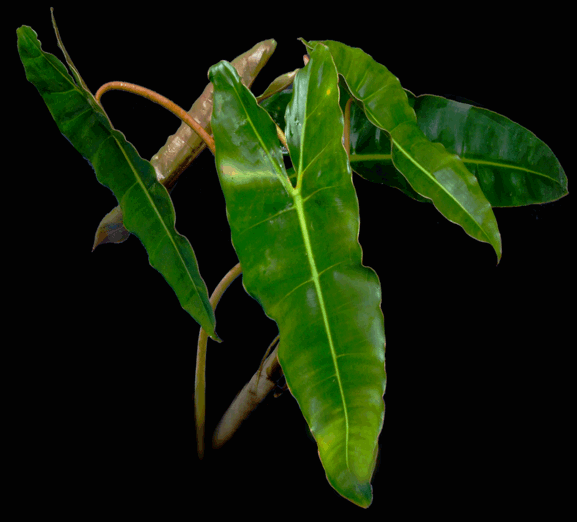
Sometimes confused with Philodendron grandifolium
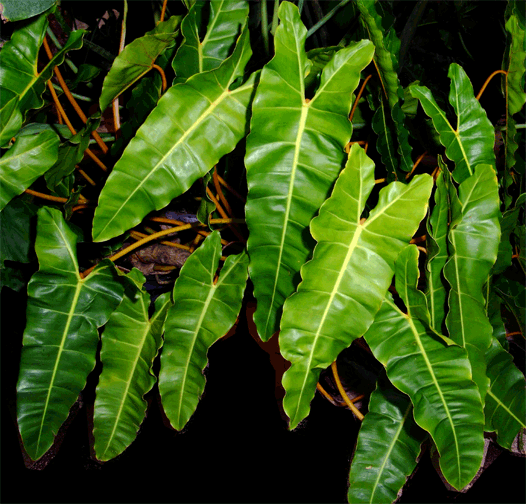 In the fall of 2006 Dutch
conservationist Joep Moonen (pronounced yupe) forwarded a group of
transparencies of exotic plants found in the Guiana
Shield for me to review. The Guiana Shield is a very old granite formation
ranging from Bolivar State in Venezuela and includes Guyana,
Suriname, French Guiana, Amapā State in Brazil and the tip
of Colombia. Ecologists consider that rain forest area a single
ecosystem while at the same time a part of the vast Amazon. One
of Joep's transparencies, Philodendron billietiae,
immediately captured my attention. I
began asking him for information regarding the species and within a few weeks I had located a specimen to add to the
Exotic Rainforest. Both Dr. Tom Croat of the
Missouri Botanical Garden and Joep provided detailed information
indicating the plant was found only in French Guiana and
northern Brazil. P. billietae is endemic
(exclusively found) in two particular regions, one near the Rio Oiapoque in French Guiana and
the other in Brazil near the Rio Negro. The Rio
Negro joins with the Rio Solimoes to form the Amazon near
Manaos.
In the fall of 2006 Dutch
conservationist Joep Moonen (pronounced yupe) forwarded a group of
transparencies of exotic plants found in the Guiana
Shield for me to review. The Guiana Shield is a very old granite formation
ranging from Bolivar State in Venezuela and includes Guyana,
Suriname, French Guiana, Amapā State in Brazil and the tip
of Colombia. Ecologists consider that rain forest area a single
ecosystem while at the same time a part of the vast Amazon. One
of Joep's transparencies, Philodendron billietiae,
immediately captured my attention. I
began asking him for information regarding the species and within a few weeks I had located a specimen to add to the
Exotic Rainforest. Both Dr. Tom Croat of the
Missouri Botanical Garden and Joep provided detailed information
indicating the plant was found only in French Guiana and
northern Brazil. P. billietae is endemic
(exclusively found) in two particular regions, one near the Rio Oiapoque in French Guiana and
the other in Brazil near the Rio Negro. The Rio
Negro joins with the Rio Solimoes to form the Amazon near
Manaos. 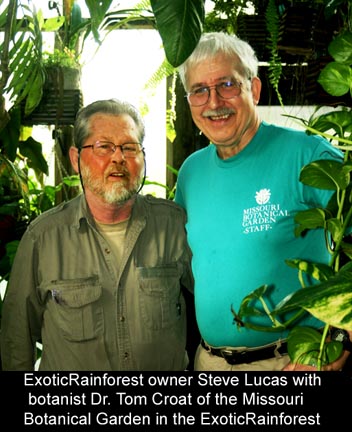 According to Joep's
information the plant can be found growing at ground level
near rocks or well up in the forest as an epiphyte (ep-a-FITE) on trees.
According to Dr. Croat, who wrote the species' scientific
description, the plant is truly a hemiepiphyte
(hem-a-EPA-fit) which
means it can either grow from the ground up onto a tree or a
bird can deposit a seed in it's droppings on a tree branch
and once the plant takes hold will eventually send roots downward toward the
soil. Philodendron billietiae prefers bright open
areas with only slightly filtered light and is often found
near a river. The specimen's beautiful leaves are heavily
coriacious (leathery) with scalloped edges and each blade is
topped by sharply upward pointing lobes.
According to Joep's
information the plant can be found growing at ground level
near rocks or well up in the forest as an epiphyte (ep-a-FITE) on trees.
According to Dr. Croat, who wrote the species' scientific
description, the plant is truly a hemiepiphyte
(hem-a-EPA-fit) which
means it can either grow from the ground up onto a tree or a
bird can deposit a seed in it's droppings on a tree branch
and once the plant takes hold will eventually send roots downward toward the
soil. Philodendron billietiae prefers bright open
areas with only slightly filtered light and is often found
near a river. The specimen's beautiful leaves are heavily
coriacious (leathery) with scalloped edges and each blade is
topped by sharply upward pointing lobes. 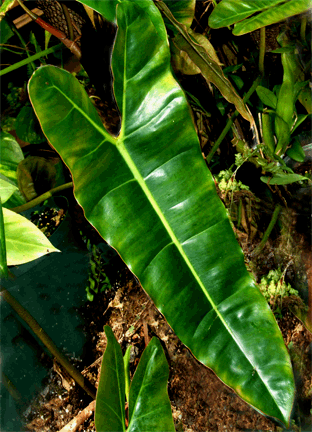 The spathe (inflorescence) of the
Philodendron is long and thin and
ranges in size from 17.5 cm to 18.5 cm (7 to 7 1/4 inches).
The upper portion of the spathe's interior is mauve, almost
a creamy white, while the lower interior portion is a dark
maroon-purple to red-violet approaching burgundy. The
outside of the spathe is pale green. The Philodendron
normally produces 2 to 3 inflorescences per axil and the
spathe stands erect.
The spathe (inflorescence) of the
Philodendron is long and thin and
ranges in size from 17.5 cm to 18.5 cm (7 to 7 1/4 inches).
The upper portion of the spathe's interior is mauve, almost
a creamy white, while the lower interior portion is a dark
maroon-purple to red-violet approaching burgundy. The
outside of the spathe is pale green. The Philodendron
normally produces 2 to 3 inflorescences per axil and the
spathe stands erect. 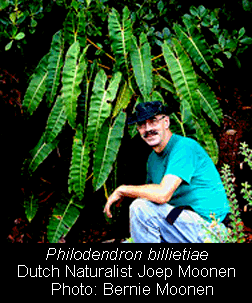 elping
of orchid potting media added.
elping
of orchid potting media added.
The top main photo of is of our specimen shortly after its arrival and both inset photos of are wild specimens are from Joep Moonen (pronounced yupe) as is the photo upper right. The photo lower left is of our specimen approximately 18 months after it was first received and the final (right) is of Joep with a large group of plants of this species in French Guiana. If you would enjoy spending time in a rain forest filled with exotic creatures and extremely rare plant species while being introduced to the jungle by an expert guide who speaks six languages, Joep enjoys introducing people just like you to the rainforest of northeast South America. Joep owns an eco-tour village in French Guiana known as the Emerald Jungle Village. His website can be found at: http://home.planet.nl/~gumamaus/
For eco-tour information and an Emerald Jungle Village brochure contact Joep at EmeraldJungleVillage@wanadoo.fr
Want to learn more
about aroids?
Join the
International Aroid Society:
http://www.exoticrainforest.com/Join%20IAS.html
Aroid Pollination!
As
it occurs in nature and by any horticulturist
Specimens may be available
from Natural Selections Exotics
![]()
or
Brian's Botanicals
http://www.briansbotanicals.net/

If you are seeking information on
other rare species, click on "Aroids and other genera in the Collection" at
the top and look for the